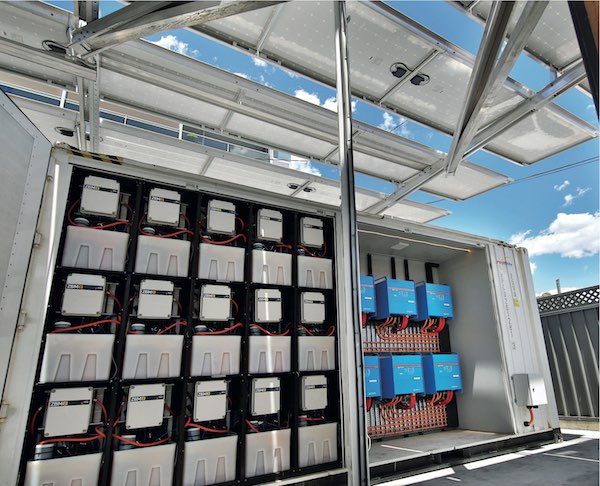Redflow Limited announced that its energy storage solutions have been approved by the California Public Utilities Commission (CPUC) as part of the state’s Self-Generation Incentive Program (SGIP).
The SGIP program provides financial incentives for the installation of new qualifying technologies that are installed to meet all or a portion of the electric energy needs of a facility. The SGIP program helps reduce greenhouse gas emissions, as well as contribute to demand reductions and reduced customer electricity purchases, resulting in increased grid reliability through improved transmission and distribution system utilization. Current SGIP rebates for qualifying distributed energy storage systems installed on the customer’s side of the utility meter can range up to $1,000 per kilowatt-hour, with the highest amounts for projects deployed within state-designated disadvantaged communities.
Redflow Limited, an Australian company, produces zinc-bromine flow batteries that are designed to work in harsh conditions in deep cycling, long-duration stationary energy storage applications in the commercial & industrial sector.  The battery systems are scalable from a single battery installation through multiple grid-scale battery deployments.
The battery systems are scalable from a single battery installation through multiple grid-scale battery deployments.
The company reports that it is one of the few non-lithium energy storage providers to have been granted SGIP approval. SGIP approval will complement Redflow’s existing presence in California, which includes its largest deployment to date. The company has 192 zinc-bromine flow batteries in 12 Energy Pods at Anaergia’s Rialto Bioenergy facility. The batteries are monitored remotely via Redflow’s cloud-based battery management system and integrate seamlessly at the site with various other clean energy technologies. The battery system has been operational for one year, and supports 2 MWh of energy and reduces peak energy use as part of the facility’s microgrid.
With SGIP approval, Redflow expects its flow batteries to be more economically attractive, as the state incentives support wider deployment across disadvantaged communities within the state.
“With more than ten years of experience delivering energy storage solutions and supporting critical infrastructure, our rugged technology has already been proven in a wide range of harsh environments, and is well-placed to support the needs of disadvantaged communities in California as outlined in the SGIP guidelines,” said Tim Harris, chief executive officer of Redflow.
Redflow expects to implement similar systems for other commercial clients across North America.
This content is protected by copyright and may not be reused. If you want to cooperate with us and would like to reuse some of our content, please contact: editors@pv-magazine.com.









By submitting this form you agree to pv magazine using your data for the purposes of publishing your comment.
Your personal data will only be disclosed or otherwise transmitted to third parties for the purposes of spam filtering or if this is necessary for technical maintenance of the website. Any other transfer to third parties will not take place unless this is justified on the basis of applicable data protection regulations or if pv magazine is legally obliged to do so.
You may revoke this consent at any time with effect for the future, in which case your personal data will be deleted immediately. Otherwise, your data will be deleted if pv magazine has processed your request or the purpose of data storage is fulfilled.
Further information on data privacy can be found in our Data Protection Policy.